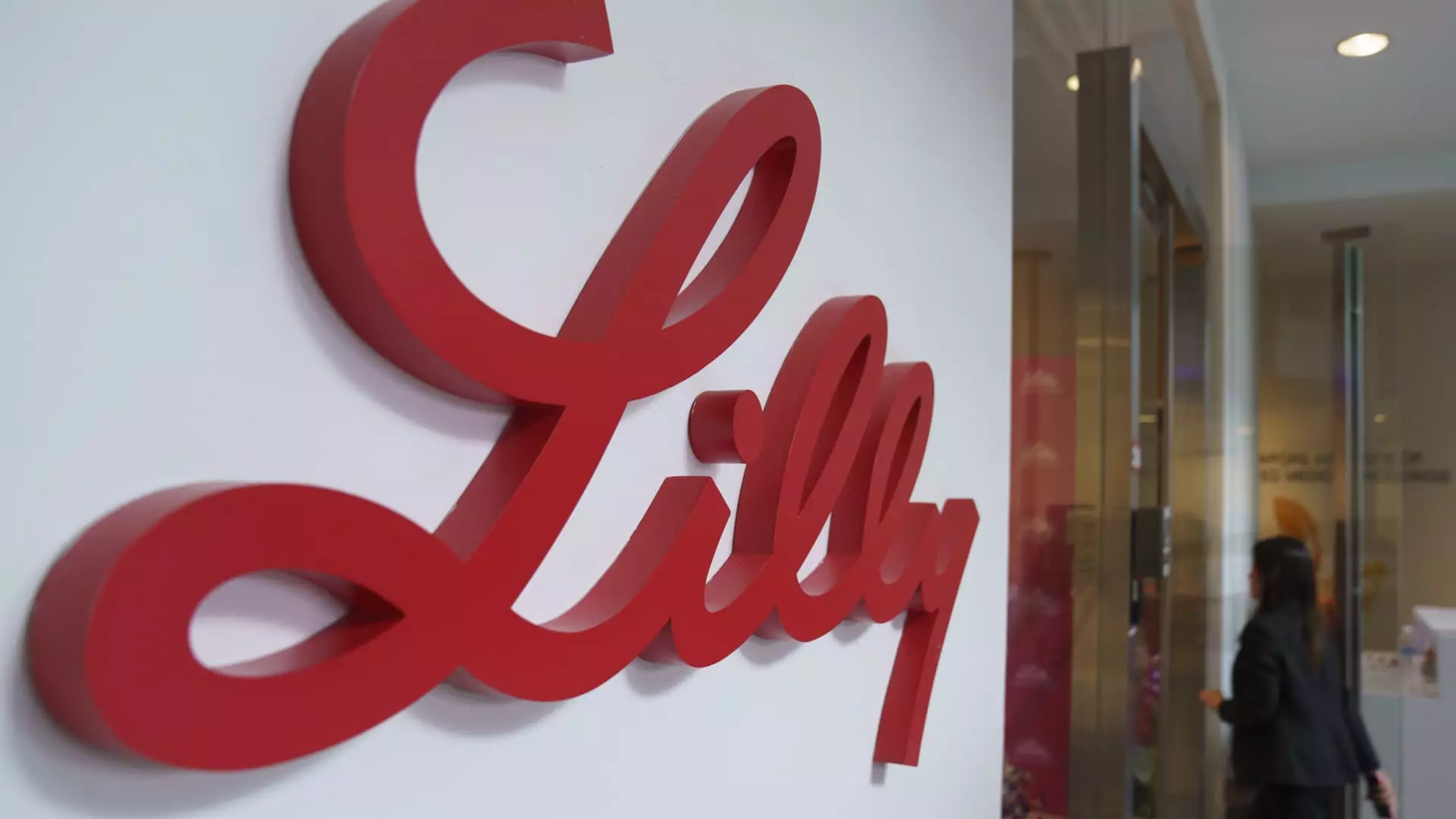Eli Lilly recently reported jaw-dropping revenue and earnings figures for the first quarter, primarily driven by the staggering demand for its diabetes and weight loss drugs. The company amassed $12.73 billion in revenue, reflecting a remarkable 45% year-over-year increase. Particularly, the blockbuster diabetes treatment Mounjaro generated $3.84 billion in sales, skyrocketing 113% compared to last year’s figures. With results like these, one might think Eli Lilly is basking in unchallenged success. However, a darker cloud looms on the horizon as the company confronts challenges that could shift their current trajectory.
Profit Guidance Slashed: A Cautionary Tale
Despite overachieving within the current fiscal year, Eli Lilly lowered its profit guidance for fiscal 2025, now estimating earnings between $20.78 and $22.28 per share, down from initial predictions of $22.50 to $24. This revision came in response to a staggering $1.57 billion charge associated with their acquisition of an oral cancer drug. By revising financial projections, Eli Lilly paints a picture of caution amid the celebration of current successes. This trend invites skepticism and raises questions about sustainability. The pharmaceutical giant is not merely riding a wave of demand but is also battling the consequences of strategic decisions that could endanger its profitability.
International Relations and Domestic Manufacturing
Delving deeper into Eli Lilly’s financial landscape reveals the complex interplay of U.S. policy and global economics. The company grapples with existing tariffs imposed by the Trump administration, which complicate their growth strategies. CEO Dave Ricks pointed out that while these tariffs aim to bolster domestic production and bring supply chains back, they also introduce variables that can undermine profit margins. His commentary suggests a reluctance to embrace tariffs as a cohesive solution. The implications of these policies, alongside the threat of additional levies on pharmaceuticals, are profound. It cultivates a landscape where national interests conflict with corporate ambitions, and companies like Eli Lilly must navigate this delicate balance.
The Increasing Role of Taxation
Ricks’ advocacy for a permanent reduction in corporate tax rates, particularly to a flat 15% for domestic manufacturing, brings forth a compelling discussion on how tax policies influence industry behavior. He highlighted the exodus of pharmaceutical manufacturing to “low-tax islands,” illustrating how global competition thrives on fiscal incentives. It raises the question of whether Eli Lilly’s push for lower taxes is about mere profit maximization or serves as a vital strategy for maintaining a robust domestic manufacturing base. The dual pressures of satisfying shareholder demands while fostering an environment conducive to sustainable growth remain an intricate puzzle for Eli Lilly and its peers.
Where’s the Supply, and Who’s Calling the Shots?
Despite their meteoric rise in sales, Eli Lilly has faced persistent challenges regarding supply for its most popular drugs, Mounjaro and Zepbound. With U.S. demand outpacing supply, manufacturing limitations threaten to stifle potential revenues. Analysts may praise the company’s ability to innovate, but they must also scrutinize inefficiencies in logistics and production. The Food and Drug Administration’s recent declaration to lift the U.S. shortage of tirzepatide may suggest an easing of supply restrictions, but the precariousness of pharmaceutical supply chains cannot be overlooked. Investors and stakeholders alike are left wondering if Eli Lilly can sustain its current growth without innovative solutions to these logistical hurdles.
The Competitive Landscape
Eli Lilly operates in a fiercely competitive market, with rivals like Novo Nordisk also vying for the same consumer base. The battle for dominance in the incretin treatments market creates an environment rife with urgency and pressure. Both companies have been compelled to invest billions into enhancing manufacturing capabilities. Herein lies a critical turning point: Will these investments translate into sustained market share, or will the inherent risks tied to production costs and regulatory landscapes compromise profitability? As Eli Lilly navigates this landscape, real-time tactical adjustments will become essential.
The future of Eli Lilly isn’t defined merely by its current successes, but rather by its ability to address longstanding challenges while adapting to an ever-evolving healthcare landscape. With myriad variables in play, the pharmaceutical giant’s road ahead is paved with both opportunity and risk. How Eli Lilly maneuvers through these complex dynamics will define its standing in the industry for years to come.


Leave a Reply